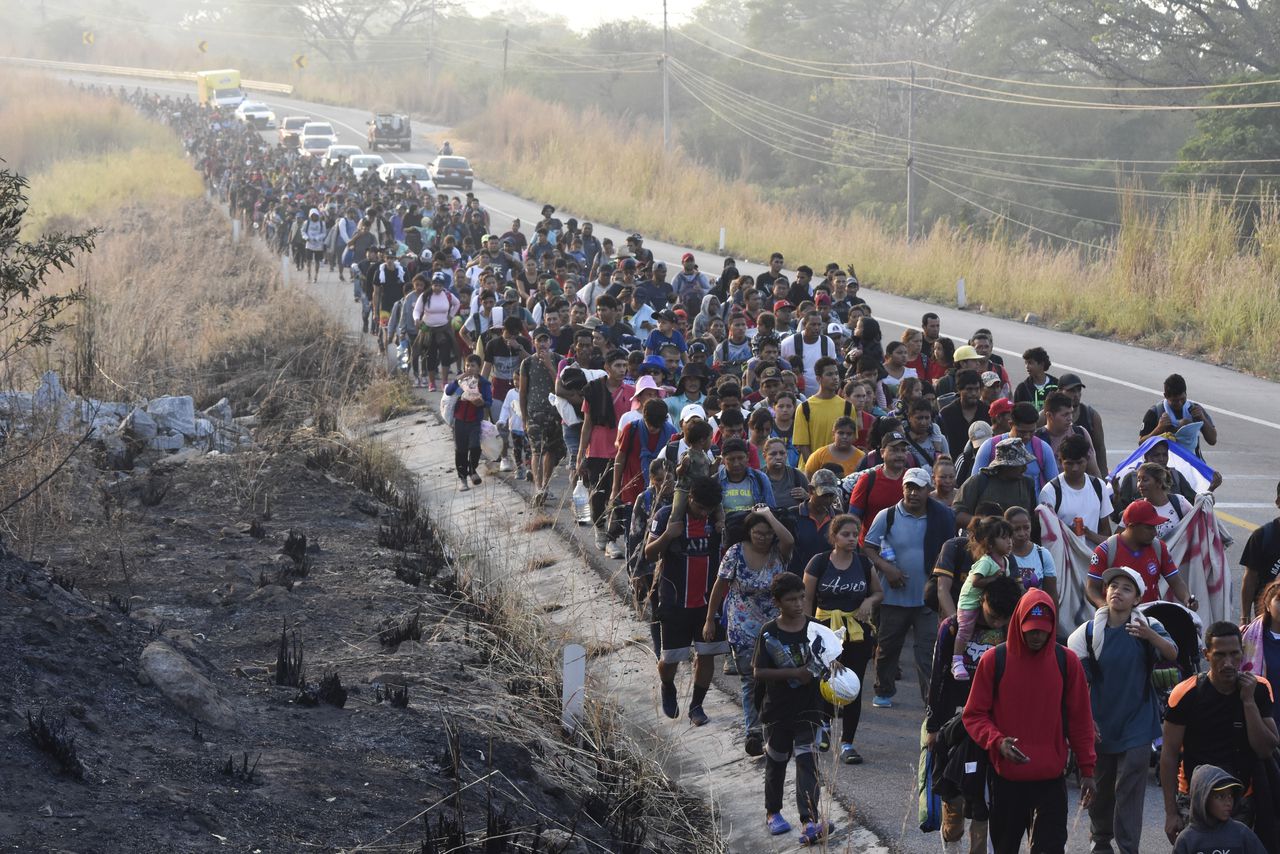How immigrant Iowans are navigating a political landscape that doesnât see them
Migrants in Iowa are growing wary of anti-immigrant rhetoric from Republican contenders hoping to secure a presidential nomination as the GOP caucus kicks off a contentious election year.
Immigration has taken center stage as a nationwide issue, with legal battles set up involving Texas, New York and the federal government. The issue was discussed during the first Republican primary debate of the year and during a concurrent town hall featuring Former President Donald Trump on Wednesday night — both of which were held in Iowa.
In states like Iowa where the migrant population is smaller, advocates are working to make them feel welcome in the community.
“People are people and we need to be welcoming and help them make this their community that they can call home,” said Erica DeLeon, an immigration attorney and director of One Siouxland, a community initiative group that advocates for immigrants and refugees. Siouxland is a tri-state community spanning Iowa, Nebraska and South Dakota.
According to data from the American Immigration Council, about 5.3 percent of Iowa’s residents are foreign-born, with about 3 percent of U.S.-born people in the state living with at least one immigrant parent. In total, 170,118 migrants resided in the state as of 2021.
“It’s a sizable population with significant economic impact,” Nan Wu, the research director at the American Immigration Council, told Reckon. “And the data shows they are using their money to spend on local businesses and are creating more jobs for their communities, really showing the heroes that immigrant workers are playing in many industries.”
Immigration is certainly on the minds of Republican candidates ahead of Monday’s caucus. Trump has been campaigning hard around immigration, using rhetoric similar to Adolf Hitler’s talking points, according to the Washington Post. Migrants or the U.S.-Mexico border has been mentioned in about 62 percent of all pro-Trump ads, according to a December report by AdImpact, an advertising intelligence firm.
In total, GOP contenders spent about $89.6 million on campaign ads just for Iowa, making up 43 percent of the party’s presidential primary spending, the firm said. About 35 percent of Trump’s ads spending was focused on Iowa as well.
DeLeon said Sioux City and the surrounding regions have seen less of an impact this election year than they did previously. She said the New Hampshire caucus might have taken away some of the focus, especially with blizzards impacting parts of Siouxland.
But Iowa’s migrant population hears the anti-immigrant and border security rhetoric from candidates. Some immigrants arrive in the U.S. with conservative family values, she said.
“They hear conservative politicians being on their side about some things, but completely against them being in the country as a whole,” DeLeon said. “And I think that’s frustrating for people.”
The data proves that sentiment. According to a 2021 poll by The Associated Press-NORC Center for Public Affairs Research, 1 in 3 Americans worry that immigration is overall causing U.S.-born citizens to lose their economical, political and cultural influence.
Researchers acknowledged that the population of migrant Iowan communities are relatively few in number compared to states like California and Texas, which have immigrant populations of about 26 and 17 percent, respectively.
Wu said smaller immigrant populations might have difficulties developing targeted programs or policies to support their communities.
But despite fewer numbers, Wu said Iowa’s immigrants support the state economy in a variety of ways. Immigrants make up about 4.6 percent of entrepreneurs in the state and more than 15 percent of postsecondary teachers, according to AIC.
AIC found that immigrants, including those who are undocumented, are more likely to be of working age and active in the labor force. More than 110,000 immigrants, or about 7 percent, make up the state’s workforce.
One Siouxland said the region lacked a collective cross-state effort to uplift marginalized members in neighboring communities.
The organization, DeLeon said, was also created “to help our existing residents understand, appreciate and embrace our changing demographics.” Iowa, which has a slightly smaller population than Los Angeles at about 3.2 million, has a nearly 90 percent white population.
In Iowa, there were 15,086 immigrant children and a couple thousand DACA recipients as of 2021. Of the migrants in Iowa, about 20.9 percent are undocumented. They are about 1.1 percent of the total state population, but make up about 1.4 percent of the workforce.
Nearly half of Iowan immigrants are naturalized U.S. citizens, and more than 54,000 are eligible for naturalization.
Researchers said the number of immigrant voters is expected to rise in the next decade and, in some states, foreign-born voters already have the ability to influence elections. In Iowa, more than 77,000 immigrants are currently eligible to vote.
One Siouxland and partner organizations work together to encourage eligible voters to participate in civic life. DeLeon said education is necessary for community members to make informed decisions and not vote based on one issue, as was the case in the 2016 presidential election.
“A lot of people were surprised that so many single-issue voters were in the community and it made a significant number of people vote for Trump despite the anti-immigrant rhetoric and the policies he had that would be against their best interests,” DeLeon said.
She said migrants, particularly those who are undocumented or are not eligible to vote, might be hesitant to talk about politics. In the Midwest, where concepts like “Iowa nice” reign, people are overall more hesitant to bring up potentially offensive topics, DeLeon added.
In the Siouxland region, there are second- and third-generations of immigrant families who settled in the 1980s. But children of migrants are leaving, she said.
“We are recognizing the impact of helping and supporting migrant families so that they want to stay around and become the next generation of leaders in our community,” DeLeon said.
